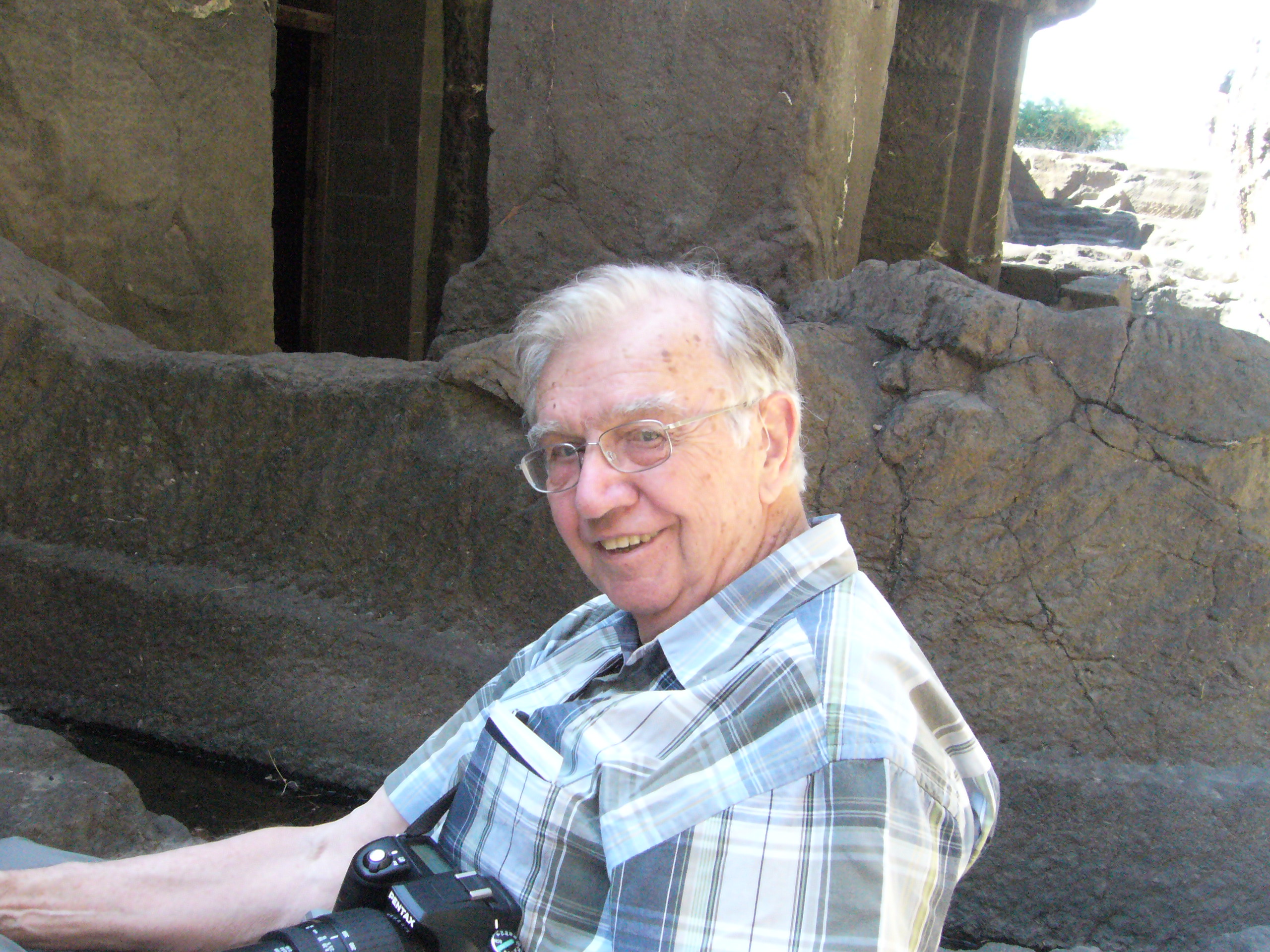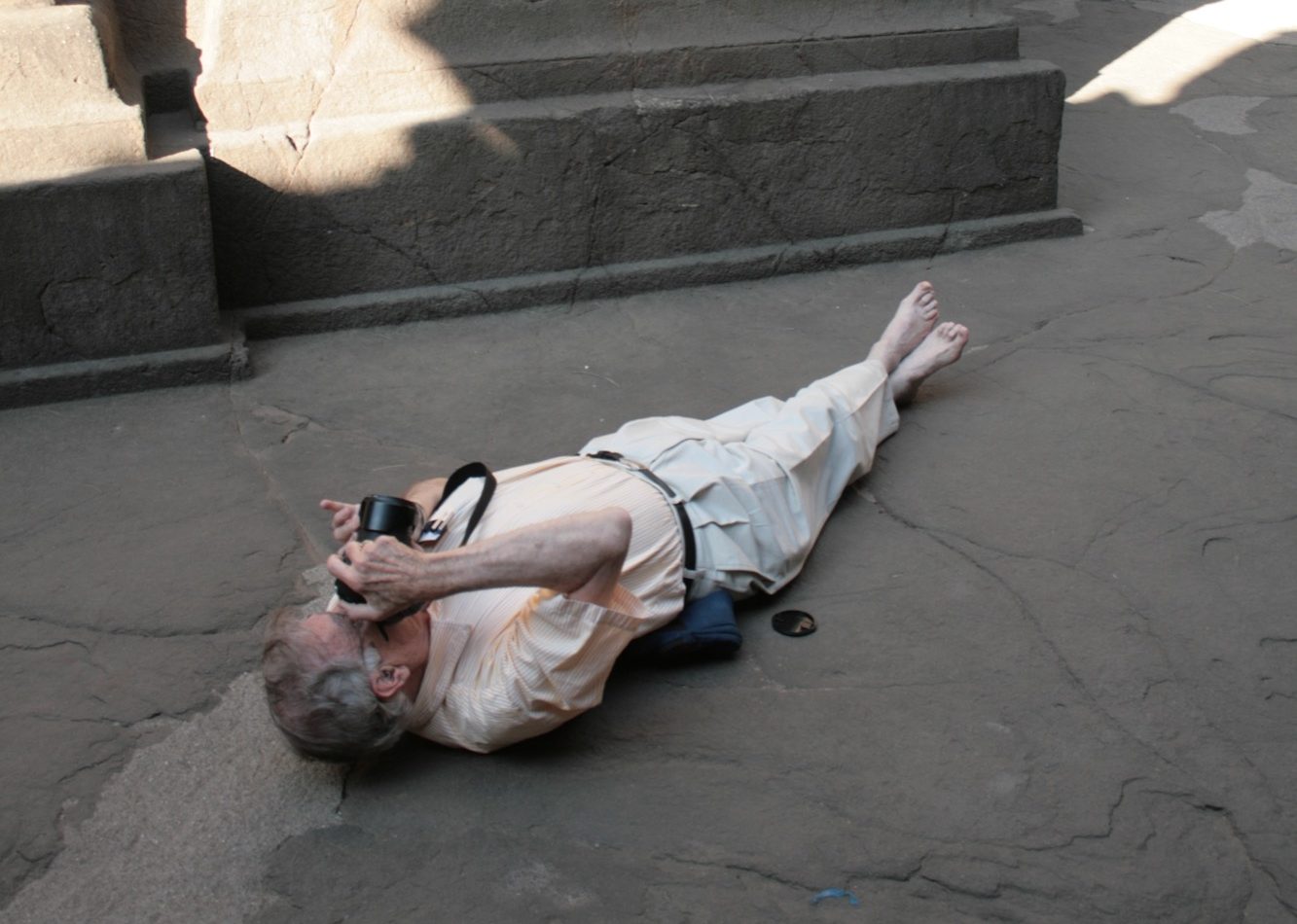At an IIT Kanpur alumni meet in the United States, friends making a film on 50 years of IIT Kanpur were interviewing Roger Vogler, the only living member of the team led by Architecture doyen Achyut Kanvinde that designed IIT Kanpur. As they wound up, Roger told them that he needed somebody ‘professional’ to shoot for his book on the Kailas at Ellora; Did they know anybody back in India?
I had only recently worked on the Heritage Management Plan of this UNESCO World Heritage Site. Slogging on a large visitor survey, I had spent my time mostly outside and around the cave complex. In the rare moments within, I had wondered about those fantastically skilled hands that had sculpted such voluptuous beauty, such vigour and life, that had literally sculpted out the burning sun, the darkness, the recesses. And now I was to discussing photographing the 8th century ‘Kailas’ Cave 16 for a book, the largest monolithic rock-carved structure in the world, the jewel in the studded Ellora crown!
We exchanged emails, Roger wanted to see some samples of my work, he asked me when I would like to shoot, how many days I would need, how would I approach the shoot. It was a gentle exchange of emails – professional and respectful. Finally, he asked me how much I would charge. Permissions from the ASI were requested, the dates, stay, tickets were organized, the shoot was on.
Our 10-day shoot started on a pleasantly chilly December morning in 2010. I had met Roger, a quiet colossus the earlier evening, who at the royal young age of 82 was striving away on his first book! Parikshit from Verul village at the base of the caves was assisting me. Roger had marked out the various shots neatly on a plan of the cave. The first day we simply walked around, used a compass to get a better sense of orientation, discussed the light, the angles and framing. We took notes and some record shots.
Over the 10 days as we worked together, staying at the Kailas hotel opposite the cave and going in for two sessions in the morning and late afternoon and spending the evening sorting through the spoils. We shot extensively in Cave 16, the Kailas and a bit all over the larger cave complex. Roger accompanied me for all shoots negotiating narrow stone stairways except the one which made it to the cover, which I shot from the top left corner of the excavation climbing onto a boulder to get a birds-eye view of sorts. The shortlisted images were further sifted and the process went on even after Roger returned to the US, with emails going back and forth. He reworked certain chapters, felt that some shots were missing for which I went back to shoot. The making of the book, the book releases, Rogers return visit with his family all gave me an opportunity to know him better. Using that and a note that he had prepared himself for referring to while the book was being released in Pune I have written up the following and I hope it gives the reader some idea of the dense and rich life Roger led.
Roger, born December 31, 1927, graduated from High School in 1944 and went to serve for two years in the US Army Air Force in Korea. Returning in 1946, he rejoined his education majoring in art history. During these years he decided that he would rather like to pursue architecture. The head of his Art Department, strongly counselled against, appreciating especially his command over writing stating that if he ever developed doubts about a career in architecture he could fall back on being an architectural historian. Roger transferred to the prestigious Harvard University’s Graduate School of Design to leave after completing his first year. Harvard’s program was too much of a stylistic indoctrination. He spent the next year travelling through France and Italy on a motorbike for four months in search of Romanesque churches, and gaining field construction experience in California as an apprentice carpenter. He finally graduated in Architecture in 1953.
Following several years of apprenticeship in 1962 set up a partnership firm. In 1968 he accepted an assignment, with the US Agency for International Development (USAID), as Architectural Consultant for design and construction of a new campus for the Indian Institute of Technology at Kanpur, which was led by Architecture doyen Achyut Kanvinde. Living in India with his wife and young son, until November 1971, these three years introduced Roger to an understanding that there are in the world belief systems vastly different, but just as valid, as those with which he had grown up, he considered it the most transformative lesson of his life. He travelled extensively visiting heritage sites in India. The experience of the Kailas, the largest monolithic temple carved out of the sheer rock as part of the Ellora complex, also known as Cave 16 overwhelmed his being. It remained the most powerful spatial, physical and spiritual experience of his lifetime. He photographed extensively on slide film during this period and had neatly catalogued all his work.
Returning to the United States in November 1971, he established a practice focusing primarily on planning for new “Third World” educational institutions, developing extensive architectural programs for universities in Algeria and Saudi Arabia. In the early 1980s, however, USAID funding dried out and he took on positions as Director of Planning of State Universities till his retirement in 1997 at the age of seventy!
Roger, had not forgotten the advice of the head of his art department. Instead of living a more than well-deserved life of retirement he returned to his University as an undergraduate to complete the requirements for his Bachelor of Arts degree in Art History that he had missed by transferring to the Architecture program. He graduated a second time in 2006 with a 30,000 word monograph ‘Inside Shiva’s Mountain: India’s Great Kailas at Ellora’ submitted for his BA.
One of his professors, many years younger to him at University (all the University profs were considerably younger to him and his co-students obviously even much younger!) encouraged him to turn his passion and scholarship on the Kailas into a book. Which Roger did, while looking for photographs from his days in India he discovered that strangely enough from his entire collection the rolls shot in Kailas were the only ones missing. Seeing this as a calling he returned to India and shot himself for his book. Back in the US he submitted the manuscript along with his images to a number of publishers. To receive virtually no response, not even acknowledgements, except that while the subject itself may not find takers in the US he should in any case consider a better set of photographs. He was looking at figuring this out when he received a request from the filmmakers to attend the IIT Kanpur alumni meet in the US. He went there very reluctantly.
Like books take, this book too took its own time. I knew the INTACH Aurangabad chapter from my earlier work and set up a meeting. It was agreed that a copy of the manuscript was sent to Prof Dr. RS Morwanchikar, an authority on the Satavahana period of the region. The unsaid was that if Dr Morwanchikar approved the book INTACH would consider it. This realization was not lost on Roger and he was visibly nervous. The meeting went well, Dr Morwanchikar had read the manuscript and he believed that the book needs to be published. As we exited the meeting, Roger, still visibly stressed confirmed with me whether Dr Morwanchikar had actually mentioned that, and I confirmed it to see Roger visibly relieved. The Aurangabad Chapter of INTACH (Indian National Trust for Art & Cultural Heritage) and MAPIN, the best possible publisher for a book of this type agreed to publish this book. Raising of required resources took time, Roger’s book, ‘The Kailas at Ellora, A New View of a Misunderstood Masterwork’, was published in July 2015 a good four and half years after we did the first shoot.
Roger remained extremely involved with his beloved Kailas. One of the side cave complex with a stunning sculpture of Nataraja which we featured in the book had bats in it. The ASI decided to fix a wooden frame with wire mesh in the openings that overlooked the main temple to keep bats out. This was problematic at many levels, including the fact that it completely cut off the beautiful light that caught the Nataraja, importantly it made no difference to the bats, they continued to access the cave via the tunnelled stairway that remained open! Roger tried despite the distance and the challenges age poses to find solutions to the problem including discussions with bat experts and also engage with the ASI on this matter. That the grills still remain are an unfortunate testament to our own insensitivities.
The last I met Roger was about 3 years back. Fiercely independent even at this advanced age I remember he was returning to the US after all by himself. For reasons beyond anyone’s control his children who were accompanying him on the trip could not stay back. We were all obviously concerned on how he would manage the flight back. I talked to the airlines and they suggested that the easiest would be to ask for a wheelchair, that would come with an attendant, they couldn’t give a person to help otherwise and they added that Roger would have to sit in the wheelchair. I tried to explain to them that Roger can walk just fine, that all we needed was a little assistance, but they had their standard protocols to follow. I discussed this with Ned, his son, Ned felt that there was no way Roger would agree to this. I talked to Roger and it took him some convincing but he finally agreed and we all heaved a sigh of relief.
Though I only had photographed for the book, Roger was very generous to give me credit on the cover and the jacket. Incidentally, unlike what publishers in the US had told him, Roger was actually an excellent photographer and had taken impressive images of the caves, about 40% of the images used in the book are his!
Roger has moved on. He has left a fantastic legacy in the University campuses including IIT Kanpur he helped guide, his scholarship, his writings and published works, his personal rapport with people he engaged and his book on the Kailas. For the many people, his long and eventful life touched he will forever remain an inspiration. Thank you, Roger.
Peeyush Sekhsaria, is an Architect & Geographer by training, worked in the Development Sector. He photographed for Roger Vogler’s book, “The Kailas at Ellora – A New View of the Misunderstood Masterwork”











